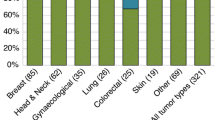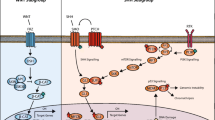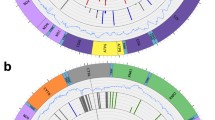Abstract
To date, several studies on genomic events underlying medulloblastoma (MB) biology have expanded our understanding of this tumour entity and led to its division into four groups—WNT, SHH, group 3 (G3) and group 4 (G4). However, there is little information about the relevance of pathogenic mitochondrial DNA (mtDNA) mutations and their consequences across these. In this report, we describe the case of a female patient with MB and a mitochondriopathy, followed by a study of mtDNA variants in MB groups. After being diagnosed with G4 MB, the index patient was treated in line with the HIT 2000 protocol with no indications of relapse after five years. Long-term side effects of treatment were complemented by additional neurological symptoms and elevated lactate levels ten years later, resulting in suspected mitochondrial disease. This was confirmed by identifying a mutation in the MT-TS1 gene which appeared homoplasmic in patient tissue and heteroplasmic in the patient’s mother. Motivated by this case, we explored mtDNA mutations across 444 patients from ICGC and HIT cohorts. While there was no statistically significant enrichment of mutations in one MB group, both cohorts encompassed a small group of patients harbouring potentially deleterious mtDNA variants. The case presented here highlights the possible similarities between sequelae caused by MB treatment and neurological symptoms of mitochondrial dysfunction, which may apply to patients across all MB groups. In the context of the current advances in characterising and interpreting mtDNA aberrations, recognising affected patients could enhance our future knowledge regarding the mutations’ impact on carcinogenesis and cancer treatment.
Similar content being viewed by others
Introduction
Although mitochondrial DNA (mtDNA) mutations have been reported in numerous malignancies, in most cases, the pathogenic role of these variants has yet to be clarified [4]. This uncertainty is likely due to the various phenotypes of mitochondrial dysfunction. The consequences of one mtDNA variant can, for example, vary depending on the organ affected and the heteroplasmy level. It is often assumed that variants exceeding 60% to 80% heteroplasmy have a biochemical effect [9]. Nonetheless, for susceptible organs like the brain, even variants beneath this threshold might result in disabilities such as vision and hearing loss, epilepsy, ataxia, and cognitive impairment [8, 9]. This diversity poses a challenge in predicting the impact of variants. At the same time, it seems particularly intriguing, as it might contribute to gradients and stages within tumours [4].
Medulloblastoma (MB) is one of the most frequent primary malignant brain tumour entities in children. Four established MB groups, namely WNT, SHH, group 3 (G3) and group 4 (G4), differ in molecular driver events and patient outcomes [1]. However, there have been only a few investigations of the role of mtDNA variants in this tumour entity, and none of these studies considered an association with the four MB groups [2, 5, 10,11,12]. Here, we report the case of a female patient suffering from group 4 MB and mitochondriopathy and put this into the context of mtDNA variants in 444 MB patients across two distinct cohorts.
Case presentation
The index patient was first diagnosed with G4 MB at the age of seven. After complete resection of the tumour, fractionated craniospinal radiotherapy with simultaneous administration of vincristine followed by chemotherapy (cisplatin, lomustine and vincristine) was conducted according to the HIT 2000 protocol (ClinicalTrials.gov/NCT00303810). Follow-up screenings showed no signs of relapse in MRI after five years. Throughout treatment, the patient suffered from cerebellar mutism and neurological side effects such as ataxia, balance disorders and abducens paresis. Ten years after diagnosis, she presented with clinical signs such as sensorineural hearing loss, fatigue and seizures combined with increased lactate and lactate-pyruvate quotient, indicating a mitochondriopathy. Tissues of the patient and the mother (both: leukocytes, hair, bladder epithelium; patient only: tumour tissue) were tested, and a mutation in the gene encoding the mitochondrial tRNA for serine (MT-TS1) was found in all samples. The variant’s heteroplasmy ranged from 20% (leukocytes) to 70% (bladder epithelium) in the patient’s asymptomatic mother but was found almost homoplasmic (heteroplasmy \(\ge\) 89%) in patient tissue, indicating segregation with the disease (Additional file 1: Fig. S1). Within the following months, the girl developed therapy-resistant epilepsy with bilateral generalised seizures, progressive ataxia, and dysphagia. Despite all efforts, she died from the sequelae of the mitochondriopathy.
Cohort study
Based on this case, we raised the question of whether there might be a connection between pathogenic mtDNA variants and MB occurrence or phenotype. We analysed mtDNA variants in MB, employing whole-genome sequencing data of 491 patients from the ICGC cohort and 57 formalin-fixed paraffin-embedded human G3/G4 MB tumour samples of 54 patients from the HIT cohort, explored by mtDNA targeted sequencing. Samples of 101 patients and one additional control sample of the ICGC cohort were excluded from further analysis due to low coverage of the mtDNA. Following the initial calling of 34,072 (ICGC) and 4,224 (HIT) variants, respectively, all calls were annotated and filtered, aiming to identify pathogenic variants (Additional file 1).
We found 303 mutations in the ICGC and 42 mutations in the HIT cohort (Fig. 1a, Additional file 1: Fig. S2 and S3). In both cohorts, more than 85% of final calls were single nucleotide variants, and most mutations were located in the coding area of the mtDNA. The mean level of heteroplasmy, determined as variant allele frequency (VAF), was 31.78% in ICGC and 18.88% in the HIT cohort (Additional file 1: Fig. S3). To increase the likelihood of examined mutations causing mitochondrial dysfunction, we subsequently focused on variants with at least 50% heteroplasmy (n = 80).
Pathogenic mtDNA variants with high levels of heteroplasmy in MB patients a Overview of the variant filtering and classification workflow created with Biorender.com. The numbers shown refer to the number of calls at each analysis stage regardless of the number of patients harbouring these calls. b Circle plots illustrating the proportion of patients with and without mtDNA variants in ICGC (top) and HIT (bottom) cohorts. A patient was counted as mutated if an observed variant had been classified as (likely) pathogenic or disease-associated and showed a heteroplasmy of at least 50%
A small group of patients harbouring (likely) pathogenic or disease-associated mutations with high heteroplasmy appeared to be present in both cohorts encompassing eight patients (2.05%) in the ICGC cohort and two patients (3.7%) in the HIT cohort (Fig. 1b, Additional file 1: Fig. S4). However, there was no prevalence for samples with mtDNA mutations to be enriched in one MB group in the ICGC cohort (Additional file 2: Table S1). Referring to the variant detected in the index patient, one pathogenic mutation in MT-TS1 was detected in both cohorts (Additional file 1: Fig. S3a), exhibiting low heteroplasmy in all patients affected (VAF < 10%).
Discussion and conclusions
Although several reports have shown associations of mtDNA mutations with various tumour entities [10, 12], only a few studies assessed their highly context-dependent biological consequences in vivo or in vitro [4]. The introduction of cytoplasmic hybrid (cybrid) cells, methods to manipulate a variant’s heteroplasmy, and other models might enable future research to improve variant classification and receive new insights into the role of mitochondrial dysfunction in cancer [3]. In the course of this progress, it has already been demonstrated that mtDNA variants might not only be involved in carcinogenesis but also in cancer progression and the adaptability of tumours towards changing environments [4]. Furthermore, their impact on therapy efficacy and safety is currently under discussion [7]. Therefore, mtDNA aberrations may become relevant to the affected cancer patients in multiple areas of their disease.
Taken together, the case reported here highlights that neurological symptoms of mitochondrial dysfunction can closely resemble long-term sequelae of MB treatment. As demonstrated in the analysis of two cohorts, the consequences of confounding between these two pathogenicities might affect a fraction of patients in all MB groups. It remains to be elucidated whether mtDNA mutations are involved in tumorigenesis or impact tumour cell functions in these patients or a specific subgroup within MB. Nevertheless, against the background of the current advances regarding the functional analysis of mtDNA mutations, identifying the according patients could become important regarding our understanding of tumour formation, progression, and treatment outcomes.
Availability of data and materials
Whole-genome sequencing data of 491 patients from the ICGC cohort were previously published by Northcott et al. [6].
Abbreviations
- ACMG:
-
American college of medical genetics and genomics
- CDS:
-
Coding sequence
- FFPE:
-
Formalin-fixed paraffin-embedded
- G3:
-
Group 3
- G4:
-
Group 4
- IGV:
-
Integrated genome viewer
- INDEL:
-
Insertion and/or deletion
- MB:
-
Medulloblastoma
- mtDNA:
-
Mitochondrial DNA
- mut:
-
Mutated
- Position in MT:
-
Position on the mitochondrial DNA
- SNV:
-
Single nucleotide variant
- VAF:
-
Variant allele frequency
- VUS:
-
Variant of unknown significance
- wt:
-
Wildtype
References
Hovestadt V, Ayrault O, Swartling FJ, Robinson GW, Pfister SM, Northcott PA (2020) Medulloblastomics revisited: biological and clinical insights from thousands of patients. Nat Rev Cancer 20:42–56. https://doi.org/10.1038/s41568-019-0223-8
Kaneva K, O’Halloran K, Triska P, Liu X, Merkurjev D, Bootwalla M et al (2021) The spectrum of mitochondrial DNA (mtDNA) mutations in pediatric CNS tumors. Neurooncol Adv 3:vdab074. https://doi.org/10.1093/noajnl/vdab074
Kim M, Mahmood M, Reznik E, Gammage PA (2022) Mitochondrial DNA is a major source of driver mutations in cancer. Trends Cancer 8:1046–1059. https://doi.org/10.1016/j.trecan.2022.08.001
Kopinski PK, Singh LN, Zhang S, Lott MT, Wallace DC (2021) Mitochondrial DNA variation and cancer. Nat Rev Cancer 21:431–445. https://doi.org/10.1038/s41568-021-00358-w
Lueth M, von Deimling A, Pietsch T, Wong LJ, Kurtz A, Henze G et al (2010) Medulloblastoma harbor somatic mitochondrial DNA mutations in the D-loop region. J Pediatr Hematol Oncol 32:156–159. https://doi.org/10.1097/MPH.0b013e3181c97c3f
Northcott PA, Buchhalter I, Morrissy AS, Hovestadt V, Weischenfeldt J, Ehrenberger T et al (2017) The whole-genome landscape of medulloblastoma subtypes. Nature 547(7663):311–317. https://doi.org/10.1038/nature22973
Penman SL, Carter AS, Chadwick AE (2020) Investigating the importance of individual mitochondrial genotype in susceptibility to drug-induced toxicity. Biochem Soc Trans 48:787–797. https://doi.org/10.1042/BST20190233
Russell OM, Gorman GS, Lightowlers RN, Turnbull DM (2020) Mitochondrial diseases: hope for the future. Cell 181:168–188. https://doi.org/10.1016/j.cell.2020.02.051
Stewart JB, Chinnery PF (2015) The dynamics of mitochondrial DNA heteroplasmy: implications for human health and disease. Nat Rev Genet 16:530–542. https://doi.org/10.1038/nrg3966
Triska P, Kaneva K, Merkurjev D, Sohail N, Falk MJ, Triche TJ et al (2019) Landscape of germline and somatic mitochondrial DNA mutations in pediatric malignancies. Cancer Res 79:1318–1330. https://doi.org/10.1158/0008-5472.CAN-18-2220
Wong LJ, Lueth M, Li XN, Lau CC, Vogel H (2003) Detection of mitochondrial DNA mutations in the tumor and cerebrospinal fluid of Medulloblastoma patients. Cancer Res 63:3866–3871
Yuan Y, Ju YS, Kim Y, Li J, Wang Y, Yoon CJ et al (2020) Comprehensive molecular characterization of mitochondrial genomes in human cancers. Nat Genet 52:342–352. https://doi.org/10.1038/s41588-019-0557-x
Acknowledgements
We thank Marianne Schürenkamp (Institute of Legal Medicine, University of Münster, Röntgenstraße 23, 48149 Münster, Germany) for DNA isolation of the index patient. We also thank all members of the KK lab for the discussions within this project’s scope.
Funding
Open Access funding enabled and organised by Projekt DEAL. Medical College Münster (MedK) to VLEF; Deutsche Krebshilfe (70115176) to KK.
Author information
Authors and Affiliations
Contributions
VLEF and SS conducted research, data analysis, contributed to study design and wrote the manuscript. VM performed experiments, data analysis, revision of the manuscript and held a supervising role. JS and JH have been involved in conducting experiments and revising the manuscript. NJ, MK, DTWJ, SMP, TM (KiTZ), MM, SR (UKE), JV, RS, SR (UKM), AS, JR, BF, TM (UKM), and US provided resources and revised the manuscript. KK designed the study, was involved in the analysis and interpretation of data, wrote the manuscript, and provided funding. All authors listed have read and approved the final version of the manuscript.
Corresponding author
Ethics declarations
Ethics approval and consent to participate
The case is reported with ethical committee agreement (2017-631-f-S, Münster, Germany).
Consent for publication
Written informed consent regarding the publication of this case report was obtained.
Competing interests
The authors declare that they have no competing interests.
Additional information
Publisher's Note
Springer Nature remains neutral with regard to jurisdictional claims in published maps and institutional affiliations.
Supplementary Information
Additional file 1
. Supplementary materials include supplementary methods, results, supplementary Figures S1–S4, and references.
Additional file 2. Table S1
. Results of Fisher’s exact tests comparing MB groups in the ICGC cohort are shown regarding an enrichment of samples harbouring a mutation in general and an enrichment of mutations in one area of the mtDNA. For both versions, statistical analysis was conducted one time considering all variants, regardless of heteroplasmy, and one time including only variants with at least 50% heteroplasmy. Adjustment of p-values was conducted using Bonferroni correction. MB Medulloblastoma, G3 Group 3, G4 Group 4, CDS Coding sequence.
Rights and permissions
Open Access This article is licensed under a Creative Commons Attribution 4.0 International License, which permits use, sharing, adaptation, distribution and reproduction in any medium or format, as long as you give appropriate credit to the original author(s) and the source, provide a link to the Creative Commons licence, and indicate if changes were made. The images or other third party material in this article are included in the article's Creative Commons licence, unless indicated otherwise in a credit line to the material. If material is not included in the article's Creative Commons licence and your intended use is not permitted by statutory regulation or exceeds the permitted use, you will need to obtain permission directly from the copyright holder. To view a copy of this licence, visit http://creativecommons.org/licenses/by/4.0/. The Creative Commons Public Domain Dedication waiver (http://creativecommons.org/publicdomain/zero/1.0/) applies to the data made available in this article, unless otherwise stated in a credit line to the data.
About this article
Cite this article
Funke, V.L.E., Sandmann, S., Melcher, V. et al. Mitochondrial DNA mutations in Medulloblastoma. acta neuropathol commun 11, 124 (2023). https://doi.org/10.1186/s40478-023-01602-0
Received:
Accepted:
Published:
DOI: https://doi.org/10.1186/s40478-023-01602-0





